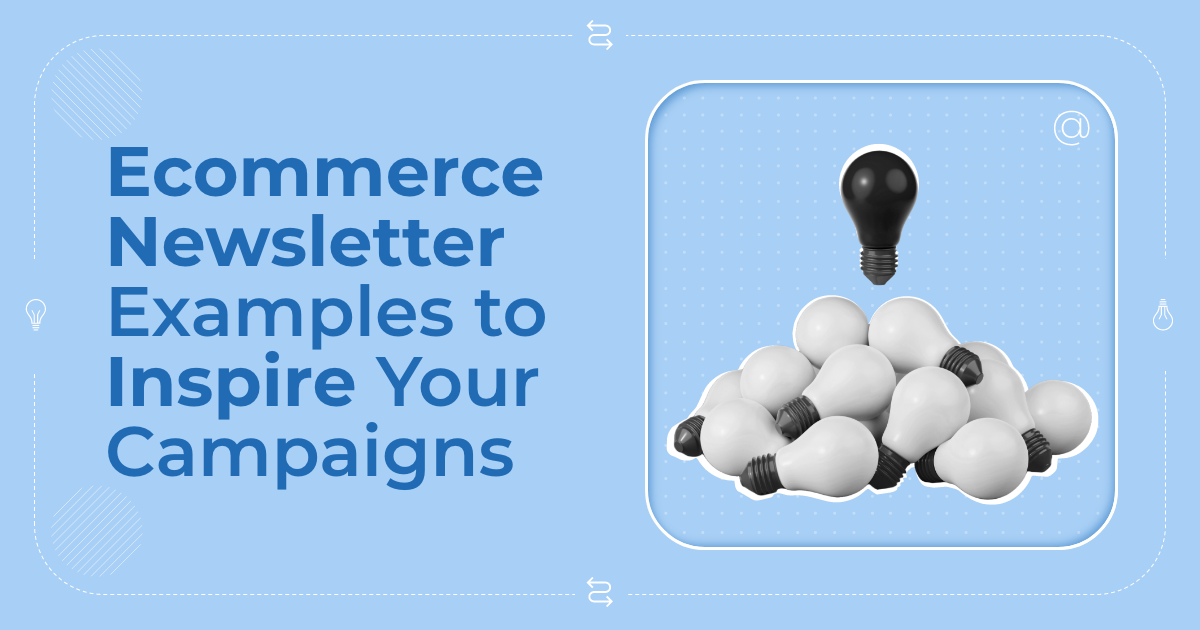
Effective Cross-Promotions: When and How They Work Best
Think of your marketing efforts as a solo stage performance. You have the vision and talent to captivate the audience on your own and deliver remarkable results.
Now picture turning that solo into a duet. Suddenly, there are more techniques, more creativity, and a bigger crowd turning in. That’s the power of cross-promotions.
And now back to the world of marketing. When brands team up, they blend ideas, resources, and audiences, creating campaigns that go further. In this guide, we’ll explore how cross-promotions work, their benefits, and potential hiccups, including strategies to ensure your partnerships are a hit.
What Is Cross-Promotion?
Cross-promotion is a co-marketing strategy where two or more brands collaborate for mutual benefit. Cross-promotion partners access each other’s target audiences and offer a more enhanced customer experience through complementary products or services to meet their goals.
Some common cross-promotion efforts include creating co-branded content, social media campaigns, and emails. These tactics elevate brand awareness, drive sales, and create value both for businesses and customers.
For example, the cross-promotional partnership between Red Bull and GoPro was a huge success. Both brands appeal to adventurous and active consumers and their products complement each other perfectly.
Key Benefits of Cross-Promotions
But why would you want to run a cross-promotional campaign when you can captivate the audience on your own? Here are some of the main benefits of successful cross-promotion marketing:
- Reach a wider audience: Businesses expand their customer base faster than they would through traditional marketing activities, such as social media posts.
- Boost brand awareness: Brands can get their products or services in front of more people that suit their buyer personas.
- Reduce advertising costs: Through a partnership, businesses can share costs and resources and save on their budget.
- Enhance trust and credibility: The collaboration works like social proof for potential customers, helping brands leverage each other’s reputations.
Briefly, it’s a cost-effective marketing strategy with multiple benefits. But is it always profitable and thriving?
Cross-Promotion Limitations and Risks
As with every marketing tactic, cross-promoting can expose brands to certain risks when not conducted diligently. About the partnership, if your values, audiences, and goals don’t align, you may end up with campaigns that don’t show your brand’s best qualities, due to poor execution or lack of communication.
Selecting a strategy you’re not familiar with due to a lack of knowledge can lead to poor execution. Before embarking on a cross-promotion journey, ensure that you have access to the resources and budget needed and keep an eye on competition to deliver the desirable campaign results.
Plus, sometimes partners may get lost in translation, trapped in back-and-forth communications that don’t add value to the process. To remove those barriers, bring your partnerships or legal teams onboard to check all the required boxes, such as budgeting, campaign style, or task allocation.
Top Cross-Promotion Strategies & Examples
Cross-promotions aren’t just a trendy tactic for eCommerce brands and influencers; they can also be highly effective in many industries like travel and healthcare. Let’s explore some of the most popular cross-promotion ideas to choose from based on your brand’s needs:
1. Co-branded content
What if you could elevate your content marketing game by partnering with a like-minded brand? Find a topic that aligns with the goals of both brands to access new audiences simultaneously and secure customer engagement by combining your strengths.
Here are some of the content types you can co-produce:
- Whitepaper
- Ebook
- Infographic
- Online course
- Blog post
You can share these resources through various channels, such as your website, social media platforms, or emails. You can also create a landing page with both logos to capture new leads and nurture them through emails. A landing page builder with premade templates and clever designs will help you save time and secure a high number of downloads.
For example, Sitecore partnered with Deloitte to craft a research report to attract marketing and tech leaders and educate their existing customer base:
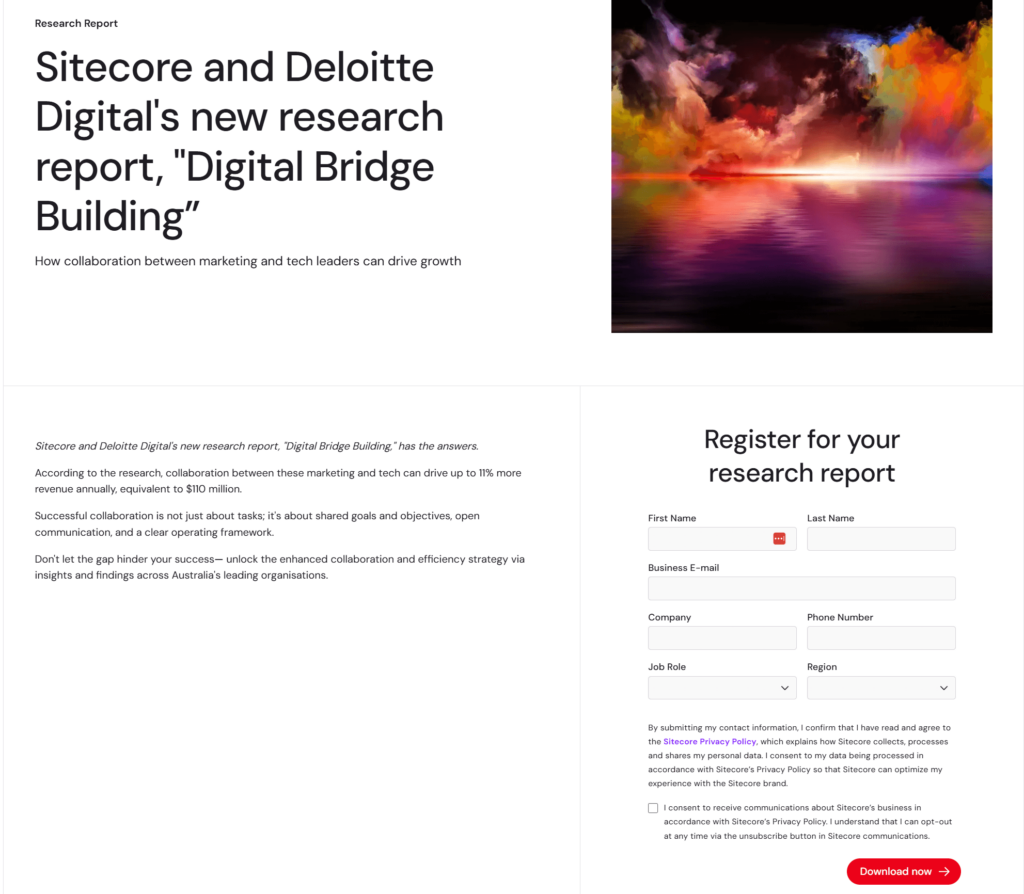
2. Co-branded email campaigns
According to a recent report, 44% of marketing professionals said that email marketing is one of their most effective tactics. You probably can tell where this is going. Sending a co-branded newsletter will give you access to the partner company’s subscribers to boost brand awareness and traffic to your website.
What you’ll include in this will depend on your goals. For example, if you send a content round-up with recent blog updates, you can demonstrate each other’s blog posts to boost your brand visibility.
If you join forces to provide a more enhanced experience to your customers, you can share a co-branded email providing services or products from both brands including your logos. To boost conversion rates, you can also apply several email marketing techniques. For example, use audience segmentation to tailor your messaging to subscribers based on criteria like preferences or engagement level.
Here, DoorDash collaborated with Starbucks on Mother’s Day to please customers and drive sales:
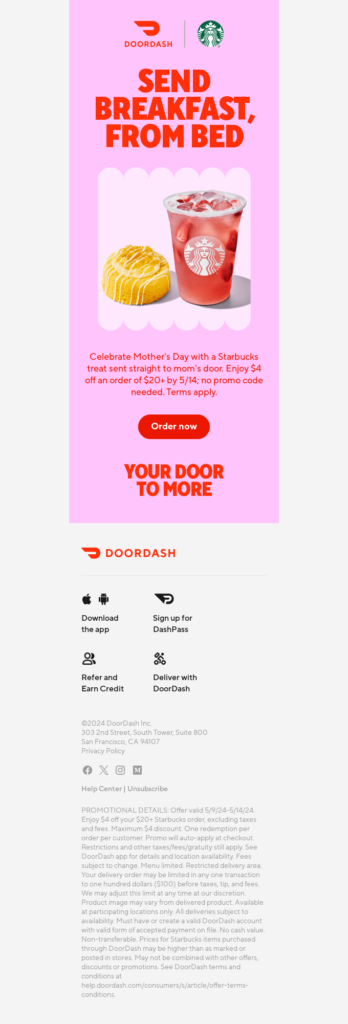
If setting up such a campaign feels troublesome, you can get an email marketing platform with user-friendly functionality. For example, Moosend offers premade email templates and a customization builder, along with segmentation and automation tools to send timely emails that resonate with your audience. You can collaborate with your partner to customize the design to suit both brand styles and add your logos.
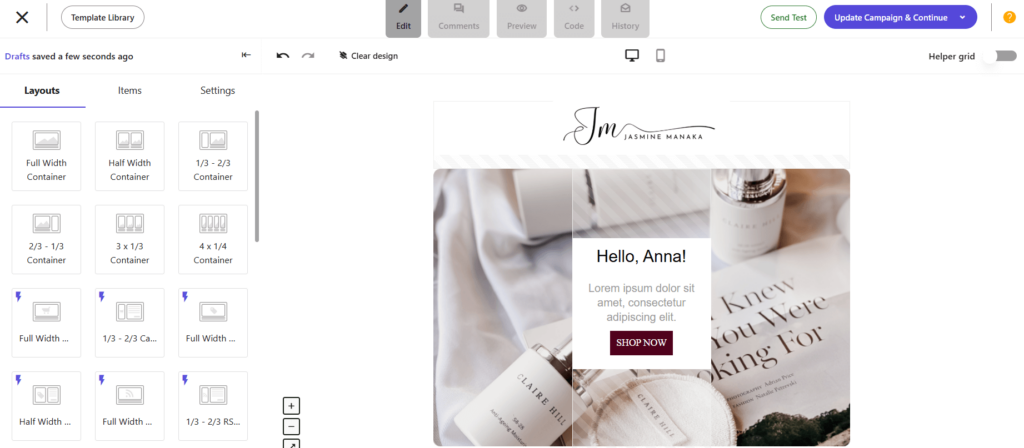
3. Social media collaborations
Many businesses rely on social media such as LinkedIn or Instagram to grow their reach. If you’re one of them, seek potential partners interested in cross-promoting with you. For example, you can run social media campaigns or share common resources, like slideshows and infographics to boost brand awareness.
Check out this partnership by AllTrails and Trust for Public Land on Giving Tuesday:
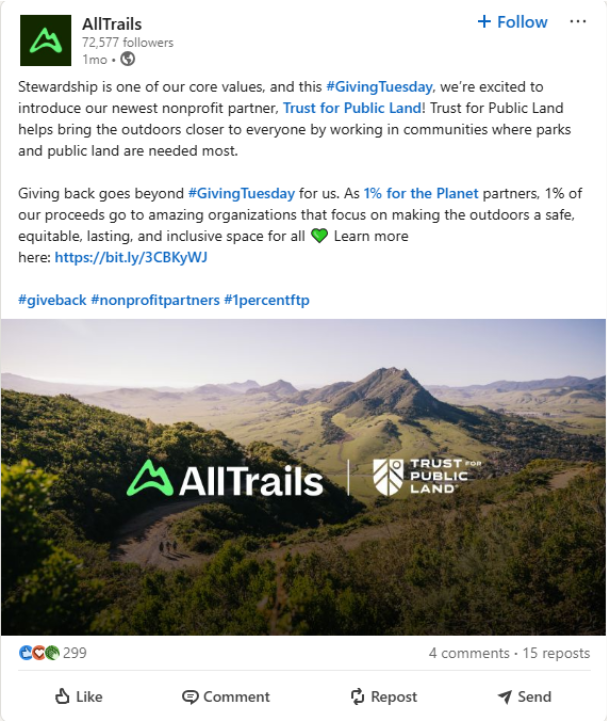
Collaborated livestreams and YouTube videos are also perfect to introduce your brand to new audiences. So are social media takeovers. Allow a partner to take over your IG account to engage with your audience and vice versa. Decide beforehand what you’d like to share to ensure you’re on the same page.
4. Product bundling
Have you spotted a brand you admire with complementary products or services to yours? Then why not team up to offer an enhanced customer experience while introducing yourself to a new audience?
Let’s imagine that you have a bubble bath brand. Partnering with beauty or wellbeing brands would make great sense. A product bundle with oil scented candles and moisturizers is perfect to attract new customers or delight current ones.
Want a real-life example? Thursday Boot Company partnered with Cobbler’s Choice to offer a premium cleaning care brand to their customers. In exchange, Cobbler’s Choice shared the boots on social media, directing users to their website through hashtags.

5. Event sponsorships and collaborations
Interested in hosting an event to reach a broader audience? Partner with other brands to share resources and attract more people than you would by going solo. You can include them as sponsors or collaborate to build the event from scratch.
If hosting a trade show or conference is way out of your budget, you can also host a webinar or online event. Establish your brand as a thought leader in your niche along with your partners to win customers’ trust.
Event marketing has its own rules–sit down to discuss what promo actions you’ll take to increase your attendance rate, including social media posting or email announcements.
Want an example to get inspired? HubSpot occasionally partners with LinkedIn, co-hosting webinars that will appeal to a large audience to gain more leads:

6. Influencer collaborations
Consumers use influencer accounts as forms of social proof to make purchase decisions, so partnering with influencers can help you access an engaged audience fast. Invite them to promote your old-time classics or new products and services by creating campaigns that highlight both brands.
While influencers have been linked with social media campaigns, you can also portray them on other assets. Include them on your website product pages or email campaigns to grab your customers’ audience fast.
For example, Gap collaborated with the global pop star Troye Sivan for the fall campaign to create a buzz around the new collection. The video below was part of the launch:
7. Contests and giveaways
Running giveaways is another example of cross-promotion that can yield high customer engagement. Partner with a brand to open the door to their audience, as well. To grab people’s attention, share a valuable incentive to introduce them to your brand’s offers. Ask participants to follow both brands to enter the contest.
Alternatively, you can create a bundle with products from both brands. For instance, Coca-Cola had created a contest with Domino’s offering an attractive, practical, and useful deal for fans of both brands:

8. Podcast collaborations
Did you know that the number of podcast listeners reached 546.7 million in 2024? Make the most of this trend to grow your audience by recording podcast episodes that will appeal to customers of both brands, especially if your target audience is a fan of this medium.
There are many ways to introduce this strategy. If you have a podcast show, you can invite a representative from another brand to talk about a topic your audiences will love. You can also co-host a podcast episode or join as a sponsor.
For example, Tonny Robbins, the well-known author and life coach, invited the NLP master Dr Richard Bandler to exchange insights on how to unlock the power of the mind.
9. Guest blogging
If you rely on content marketing activities to earn more traffic and leads, collaborating with other bloggers and websites can offer immense value to your business. Choose a brand that is well-established in your niche and can offer a new perspective to your blog.
Apart from content swaps and backlinks, you can co-create a blog series to share your expertise with your audience. For example, a meditation app can team up with a fitness brand to offer insights into a healthier lifestyle and nurture each other’s audiences.
Cross-Promotion Best Practices
Has cross-promotion started to sound like a good plan for your business? Here are some best practices to get started:
Set your cross-promotion goals
What would you like to achieve by adding cross-promotions to your digital marketing tactics? Setting clear objectives is vital to kick off to a great start. For example, an eCommerce business owner could be interested in increasing seasonal sales, while a SaaS company could focus on creating leadership content to win consumer trust.
Overall, having clear goals in mind will help you find the right partner and communicate clearly with them about expectations. Plus, decide what you would be eager to offer them in return in terms of resources and costs. It takes two to tango, so make sure that both ends tune in.
Choose your partners
Now, it’s time to find your new business partner. Find a non-competitive brand with complementary products and services that will team up with you to meet your goals. But how do you land on those partners?
First off, reach out to your network, online and offline to find businesses you admire. Check out their brand positioning, who they’ve partnered with in the past, and ensure that your values align. Plus, it’s important to learn more about their brand reputation and look for any conflict of interest that may arise.
If you don’t have a contact in common, you can reach out to their marketing leader on LinkedIn or through cold emails. Introduce yourself briefly and set the ground for a future collaboration. Explain what a partnership with your brand can offer them and share samples of previous collaborations you’ve conducted in the past.
Develop a strategy
Once you find a partner you trust, it’s time to get to business. After a few warm-up emails and calls, craft a dedicated marketing plan based on your mutual goals. Decide on the right strategies and channels for your audience and set a timeframe.
Discussing resources and budgeting will provide and open a clear communication path to avoid misunderstandings down the line. It’s important to discuss how you’ll allocate the tasks and secure a common level of commitment to meet your deadlines in time. For example, if you create a co-branded ebook, decide who will work on the design and content, and when the first and final drafts will be ready.
Plus, ensure that the messaging will appeal to your target audience and that potential and existing customers get a clear grasp of why they should trust both brands.
Monitor the results
Finally, when your cross-promoted actions are completed, move to analysis and reflection phases. In most cases, a tool like Google Analytics will help you keep track of conversion rates and ROI to figure out how effective your actions were. The same task will be performed by your partner, so make sure to do your best, too.
Depending on the nature of your cross-promoted campaigns, you can leverage other tools, as well. For example, if you run an email campaign, use a dedicated analytics platform to monitor key metrics, such as open and click-through rates. All these steps will help you understand if this partnership was fitting and how you can improve this tactic in the future.
Leverage Cross-Promotion Marketing to Boost Your Business
Now that you know the pros and cons of cross-promotions, how do you feel? Do they fit with the rest of your marketing goals? As you saw, there are many ways to benefit from it, when conducted diligently.
Remember that in most cases, teamwork makes the dream work. You just need to find the right partner to work with to thrive.
FAQs
Check out some frequently asked questions around our topic:
1. What is cross media promotion?
It’s a marketing strategy where a product or service is promoted through different channels, such as TV, print, and social media to reach a broader audience and boost engagement.
2. What is the difference between cross-promotion and co-advertising?
Cross-promotion occurs when businesses promote each other’s products to their audiences through various co-branded actions. Co-advertising is when brands promote their products together through ads.
3. How can cross-promotion benefit small businesses?
Cross-promotion can help small businesses expand their reach, boost brand awareness, and attract new buyers. By partnering with the right businesses, they can access each other’s customer base, share marketing costs, and enhance credibility.
4. How do I measure the success of a cross-promotion campaign?
You can track impressions, engagement indicators such as likes and shares, conversion rates and generated ROI.
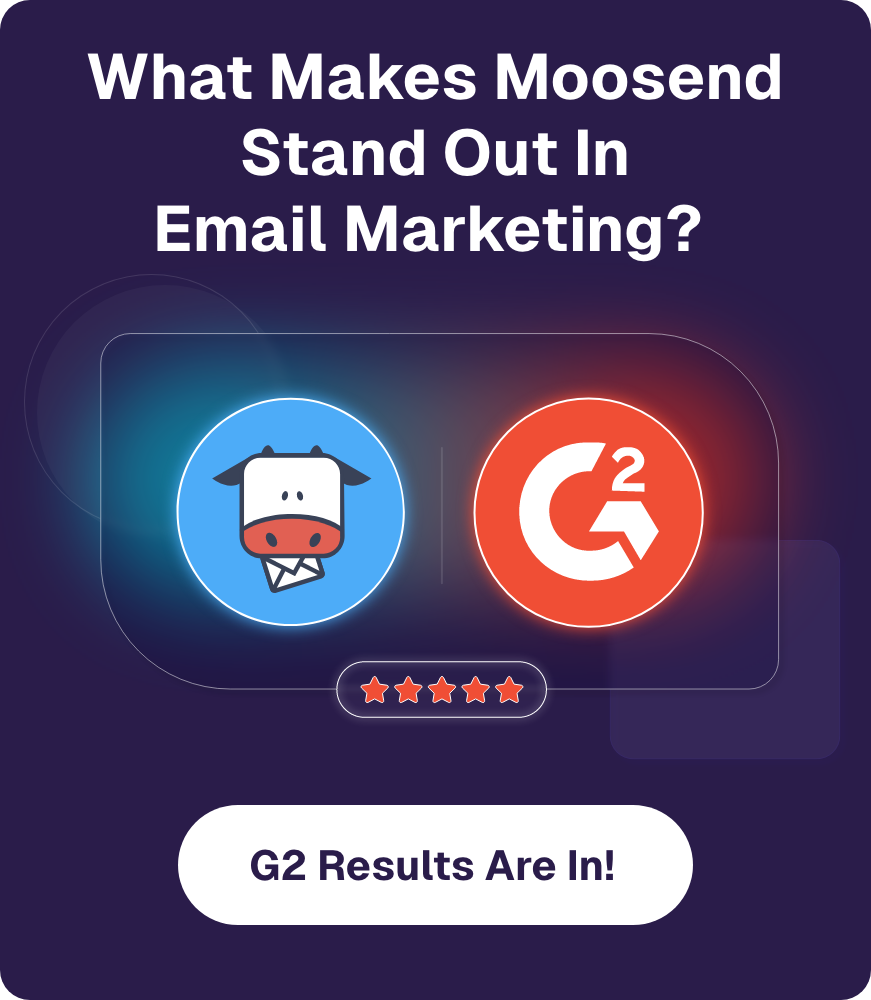


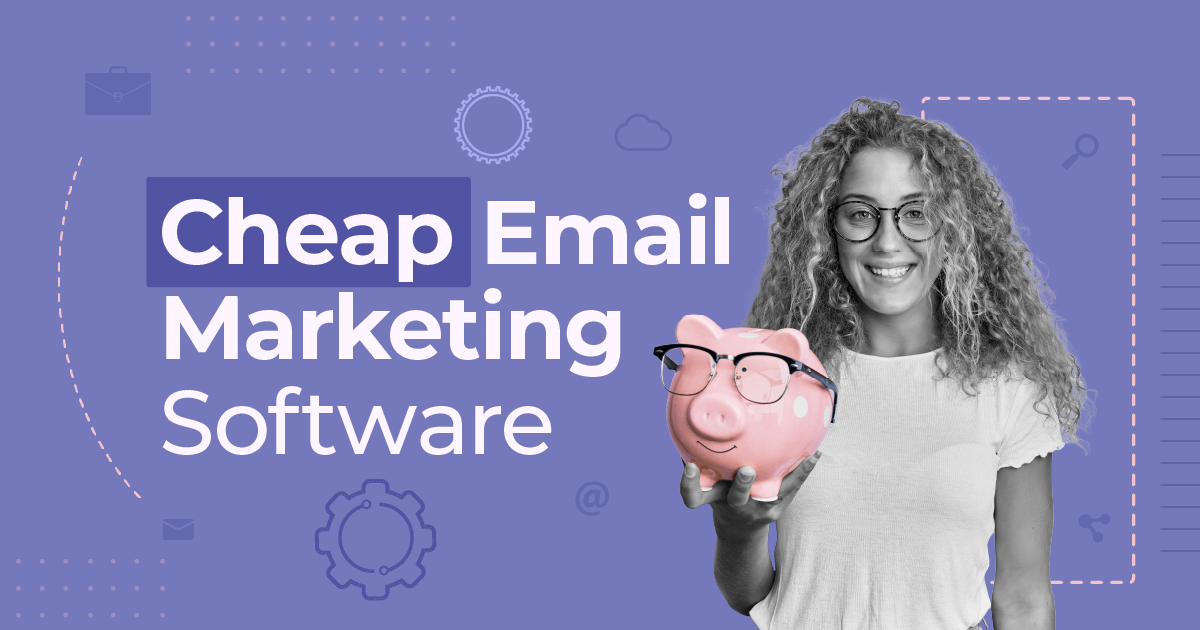
 Published by
Published by
